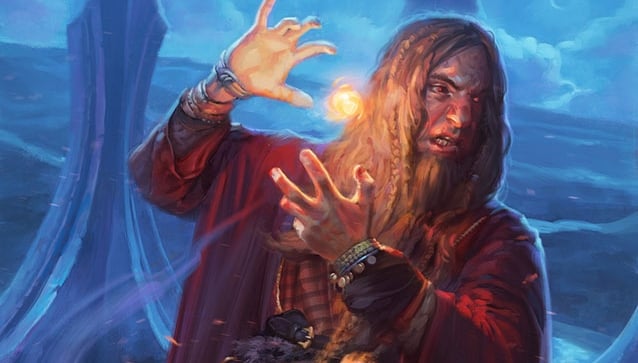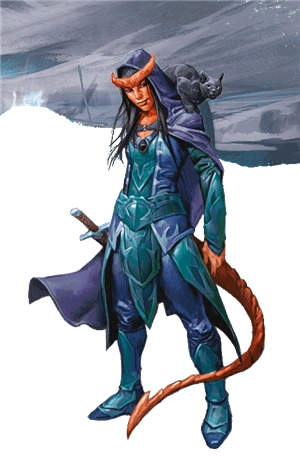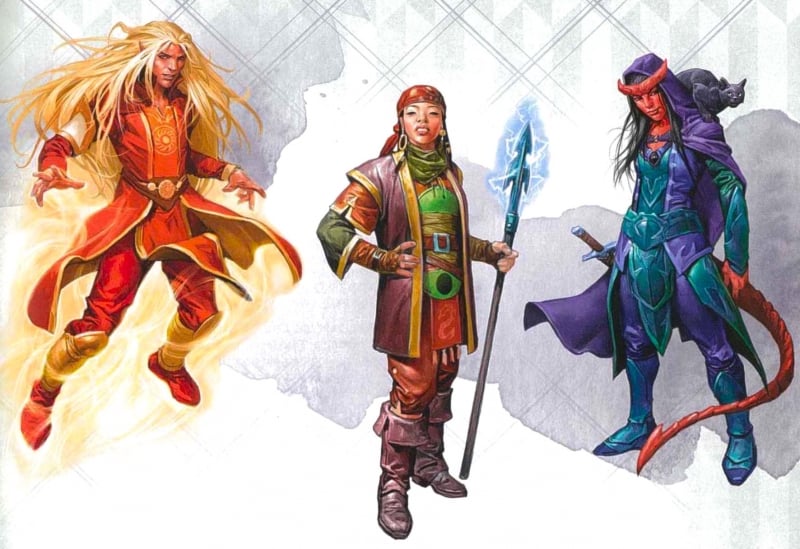D&D Guide – How to Play a 5e Sorcerer
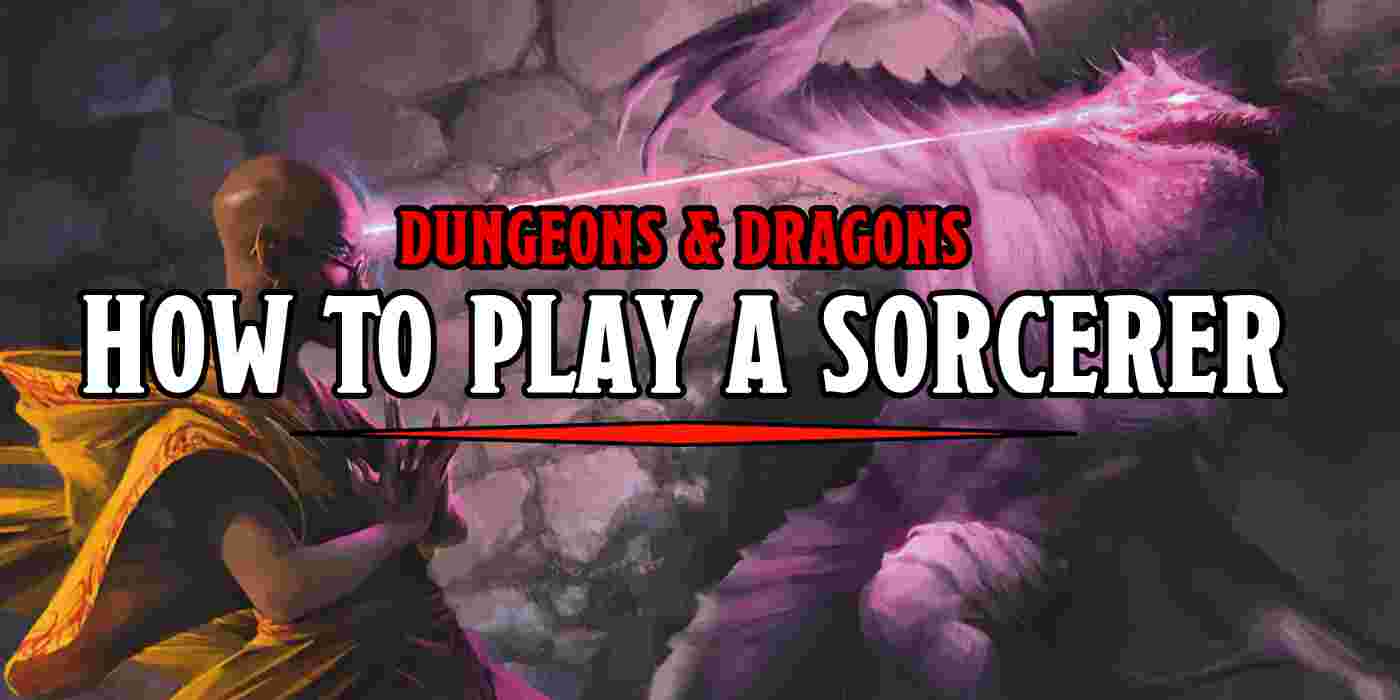
5E Sorcerers have a lot to offer the right party. Mostly spells, but they bring enough for everyone and then some. Here’s how to play one.
Sorcerers have come a long way since the beginning of 5th Edition. From their earliest days, they were all about bending the rules of magic and having just a few more spell slots than your average magic user. Now, they have a little more flexibility, both overall and moment-to-moment, thanks to the latest subclasses.
They bring the sorcery to sword and sorcery. The magic to a magic missile. Sorcerers might not have as many hit points as a fighter, but they’re surprisingly good in a fight. As long as you know how to play one.
And playing a 5e Sorcerer can be incredibly rewarding. They’re an easy enough class to get the hang of because they have such a narrow toolset to work with. But within that spectrum? Sorcerers can be almost anything. From spell-slinging at the back of the party to leading the charge, sword in hand, there’s a lot a Sorcerer can do.
And we’re going to show you how to play a Sorcerer in 5th Edition.
Jump to…
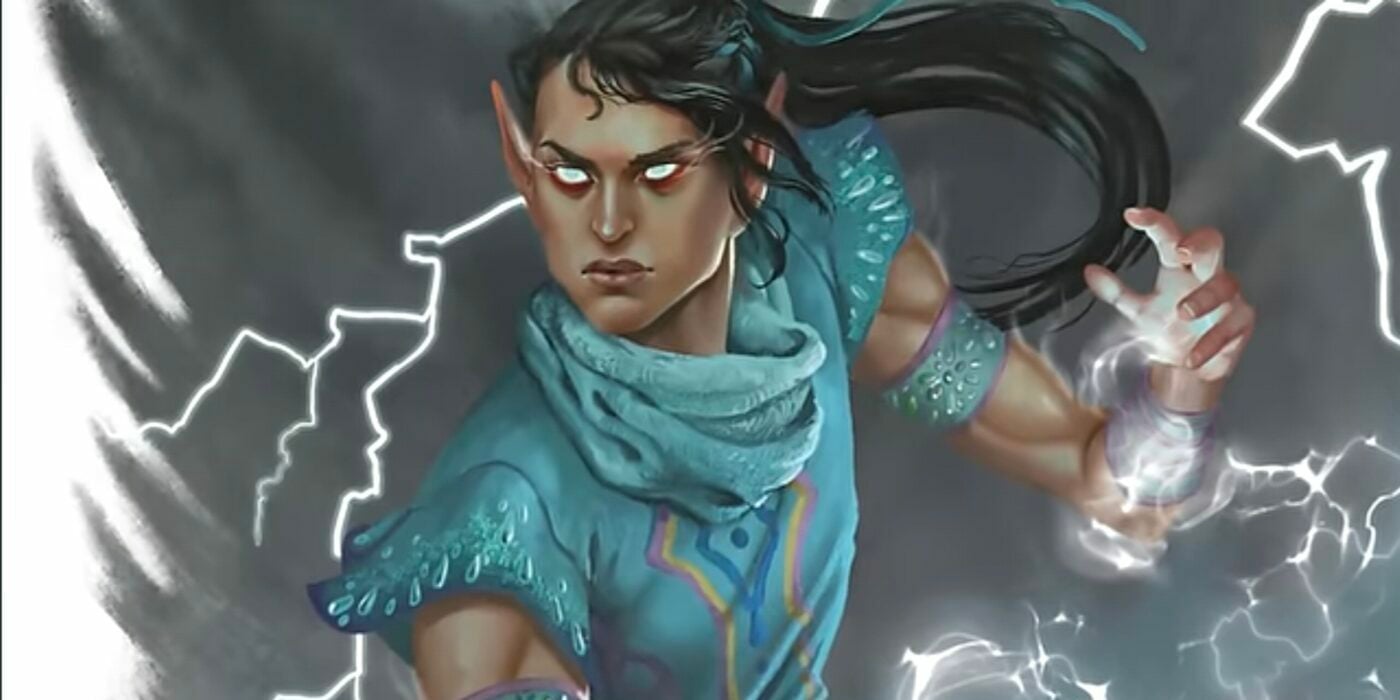
An Intro to 5e Sorcerers
Sorcerers have a lot going for them. But mostly, they have magic. A Sorcerer’s spells define their playstyle. Even more so than the subclasses or any multiclassing you might do, a Sorcerer’s spells are their go-to tool in just about any situation. And a Sorcerer can wield more spell slots than almost any other magic-using class.
But the real secret to 5e Sorcerers is their hidden flexibility. With the right selection of spells and subclasses (which give them access to more spells) a Sorcerer can fulfill just about any role they set their mind to. They have to be careful, since they rely on magic, not necessarily “having a lot of hit points” to get the job done.
Making Magic Meta
A sorcerer’s bread and butter is Font of Magic, which lets them spend a limited pool of sorcery points to either give a Sorcerer more spell slots or to get a little more oomph out of one of their spells with Metamagic abilities.
This helps to offset a 5e Sorcerer’s main drawback, they only have access to a few spells at a time. Though more recent additions add extra depth to the spell list. In Tasha’s Cauldron of Everything, features like Spell Versatility let a Sorcerer swap out one spell at the end of a long rest, which is just a great way to play the class.
But what can a Sorcerer do with Metamagic options? There are plenty of options, but only a few are ever really worth it consistently.
- Careful Spell – This lets you spend a sorcery point and offer advantage on a saving throw to creatures caught in a spell’s area of effect. Not the most useful one, since plenty of spells only target enemies.
- Distant – 90% of the time, spells have enough range to get the job done when you want to reach for them. Every now and then you really want that extra bit of reach, which is why Distant Spell can be helpful, but if you want a feature you’ll use all the time, this is better as a backup.
- Empowered Spell – Metamagic starts getting better with this one. You can reroll 1’s on damage die to make your spells deal more damage. Especially as you hit higher levels, an Empowered Spell can take a lackluster spell and give it some oomph.
- Extended Spell – Unless you’re playing in a campaign where encounters often run longer than 10 rounds, this metamagic option will almost rarely come up.
- Heightened Spell – However, what does come up plenty is casting spells that make a target save or be either incapacitated or otherwise taken out of the fight. Heightened Spell works especially well on big, fight-ending spells that don’t allow more than one save.
- Quickened Spell – Probably the most commonly chosen metamagic option, this spell is also the source of most of the confusion about how many spells a spellcaster can cast in a single turn, since this lets you turn any spell that takes a single action into one you cast as a bonus action, and you can still follow it up with a cantrip afterwards.
- Seeking Spell – One of the new Tasha’s Cauldron metamagic feats, this option lets you reroll an attack roll, often saving you the cost of a spell slot if you’re relying on spells that use them.
- Subtle Spell – This is a popular option for players who insist on casting spells in every situation. This spell lets you cast a spell without verbal or somatic components, meaning it can be undetectable in most situations. Not the most transformative in combat, but everywhere else is great.
- Transmuted Spell – As a Sorcerer, you don’t have a ton of spells. This is why having the ability to change out damage types on your big spells is helpful when you need to throw a Fireball at a Fire Elemental.
- Twinned Spell – The other powerhouse metamagic option. Twinned Spell lets you add one extra target to a spell that can only affect one creature. It’s a great way to add even more effectiveness to a spell designed to deliver a massive blow to a single creature.
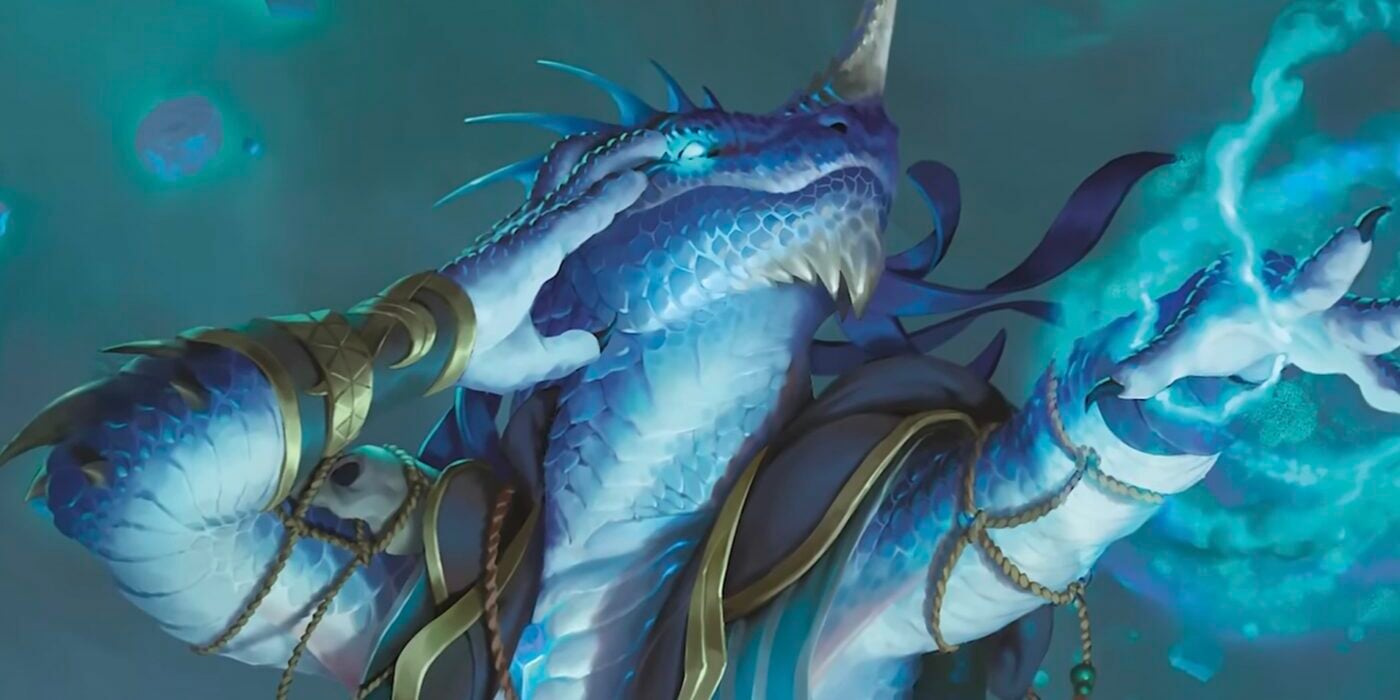
Select a Spell, Define the Playstyle
When you play a 5e Sorcerer, you’ll only ever know 15-20ish spells, which might seem like a lot, but you’ll grow that list slowly over the course of many levels. When you add a spell to your list, you’re saying, “I want to do this with my character.”
So, what can you do with a sorcerer? A lot of different things. You can pick AoE spells like Fireball and Cone of Cold to clean up house in big encounters or spells like Sunbeam or Magic Missile to do some pretty significant single-target damage. In general, you’ll want to have a nice mix of mid-level spells, because you have so few high-level spell slots, once they’re gone, you still want to be able to use your most populous spells.
That said, a few things might not be obvious. 5e Sorcerers, just plain vanilla sorcerers, are some of the best spellcaster/melee options out there. You can take the Draconic origin to get some decent armor if you feel like you need that, but any origin will do. The secret is to make use of the special melee cantrips green flame blade and booming blade to make melee attacks as well as cast spells that can potentially benefit from metamagic.
We’ll take a look in a moment, but you can cast a powerful spell like Fireball or even a single target like Disintegrate and follow it up with a quickened melee cantrip of your choice and you’ll pile on the damage. Especially if you’re using a spell-like Shadowblade which gives you even more magic and damage.
What Subclass to Pick
So quick note here, with the release of Tasha’s Cauldron, two of the subclasses have an advantage that the rest don’t. We’ll talk about that in the Aberrant Mind and Clockwork Soul origins.
Aberrant Mind sorcerers have some significant advantages. Released in Tasha’s Cauldron of Everything, they’re one of the two sorcerer subclasses to get bonus spells. This means they’ll know more spells than other sorcerers. They get access to the Wizard divination/enchantment list in a weird way. And on top of that, this subclass lets you use telepathy at will, and you can cast some of your bonus spells using sorcery points at a discounted rate–doubly so because they’re automatically subtle spells. This subclass has a powerful transformation as well, which makes it powerful for either melee or spellcasting builds.
Pick this class if you want to be a font of arcane power. You’ll be able to deal psychic damage up close or at a distance
Clockwork Soul 5e sorcerers also gain bonus spells. They have powerful defensive magic if you want to play a party support caster. But if you want to get in there and mix it up, the Clockwork soul is a great way to do that. They can neutralize advantage and disadvantage, and can create a special ward that protects against incoming damage. Another great option for melee sorcerers.
Pick this class if you want to overrule the law of averages
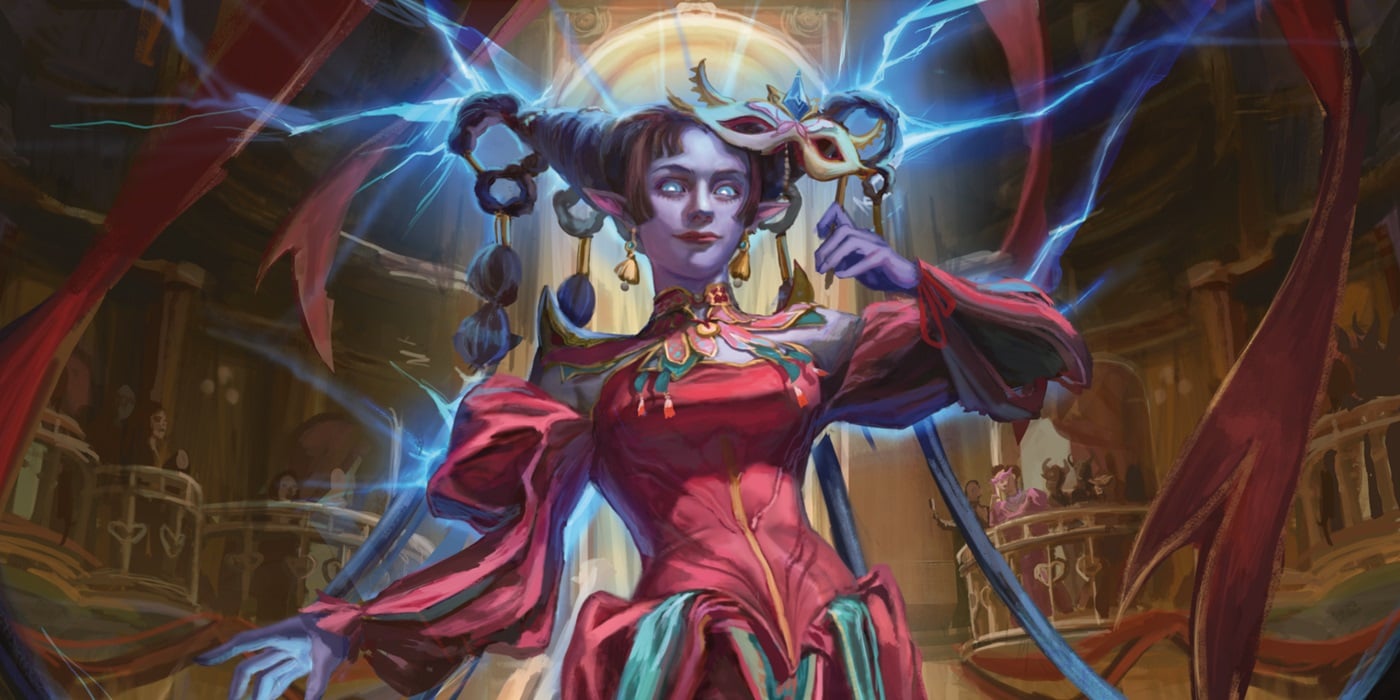
Divine Soul sorcerers get to build one of the most unique spell lists that a sorcerer can. The biggest thing this class does is add cleric spells to your list. This gives you access to a broad range of arcane and divine options–honestly, it’s a ton of fun. The rest of the 5e sorcerer class features give you some useful benefits if you’re healing. And a permanent fly speed is pretty great. A great pick for whatever role you want to fill.
Pick this class if you want to really play with flexibility. Or if you want to craft a custom spell list the likes of which the world has never seen.
A 5e Sorcerer with a Draconic Bloodline are one of the iconic sorcerers. They’re excellent at elemental spells, and if we’re honest it’s probably going to be fire. It gives you the ability to do increased damage or have extra damage. If you want to take on multiple enemies, or a single powerful one, this is the subclass for you. It’s the iconic hurling powerful magic around subclass.
Pick this class if you want to deal damage first, and ask questions later.

Shadow Magic empowers a 5e sorcerer to call upon the powers of that lurk between life and death–draw upon the fell and shadowy power of the…uh…shadow fell. It offers up a couple of extra options for your sorcery points that are incredibly powerful. You thought Heightened Spell was good? Imagine a version of that that you can use on a single target that lasts until they die. That’s what Shadow Hound does. It combines with your ability to toss darkness around willy-nilly. Still being able to see makes these characters great at control.
Pick this class if you want to summon up spirits of air and darkness. Well. Mostly darkness.
Storm Sorcery is all about power…unlimited power. Seriously. It is the thunder and lightning subclass. Heart of the Storm and Storm’s Fury you want to be in the midst of your enemies. You don’t want to take too much in the way of damage, but you do want to be in there mixing it up. Mobility is key for this subclass. Heart of the Storm lets you fly 10 feet without AoOs, so you’ve got that covered.
Pick this class if you want to deal lightning damage and fly around. But be warned, you’ll trade damage for mobility
Wild Magic rounds out the 5e Sorcerer Selections with randomness. This relies on something interesting happening every time you cast a spell. It might be good, or it might be bad. It might not be what you intended, but it definitely will be interesting.
Pick this class if you want excitement every time your turn comes around in combat. And if you have a DM willing to make you wild surge.

Well, that’s the Sorcerer. An avatar of arcane magic. A bastion of power–within select confines. They can be a ton of fun to play. But you have to be ready to build your spell list from the get-go.

